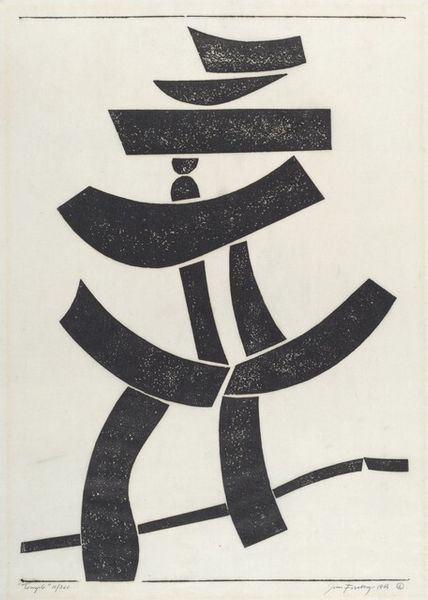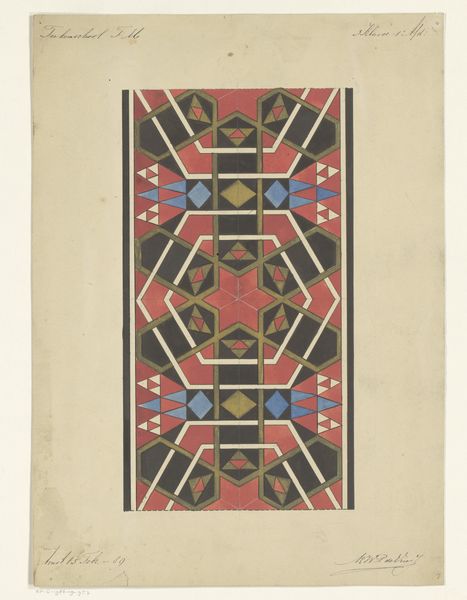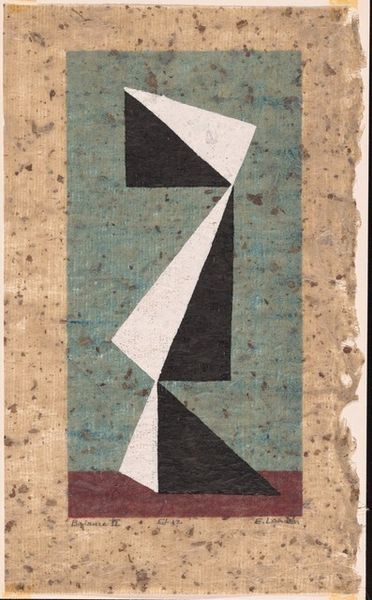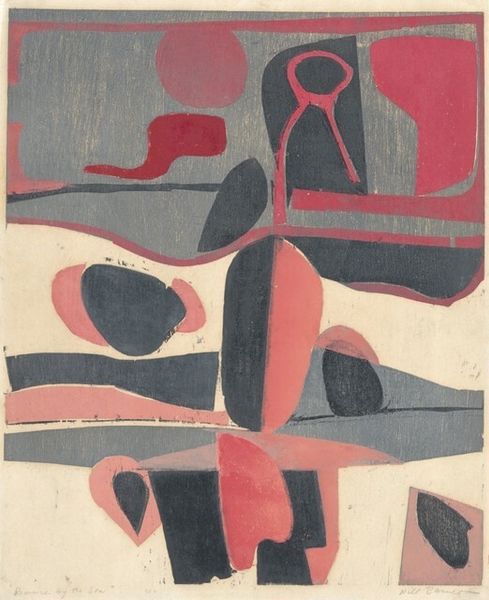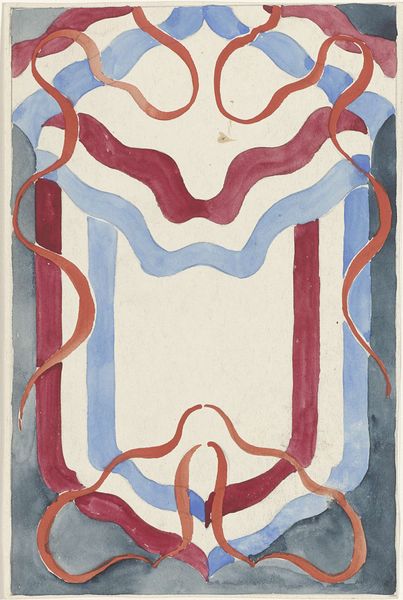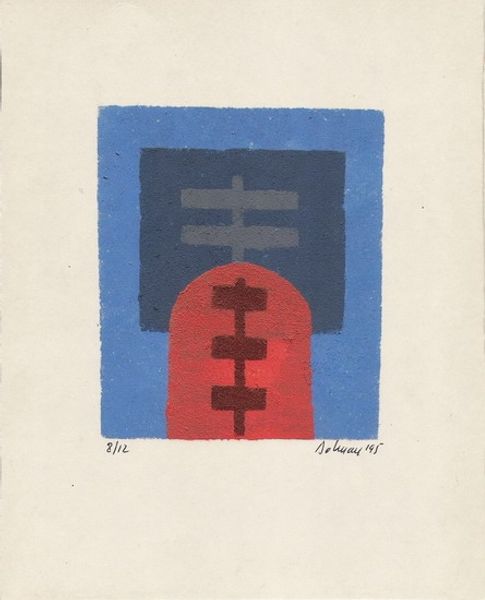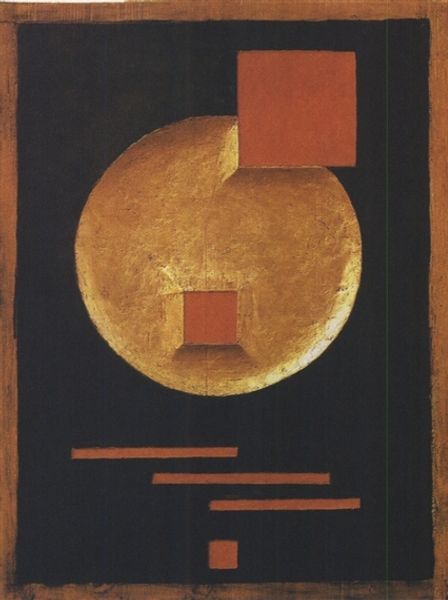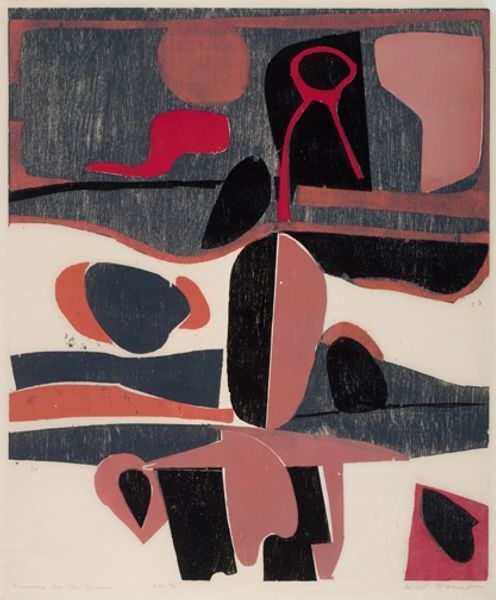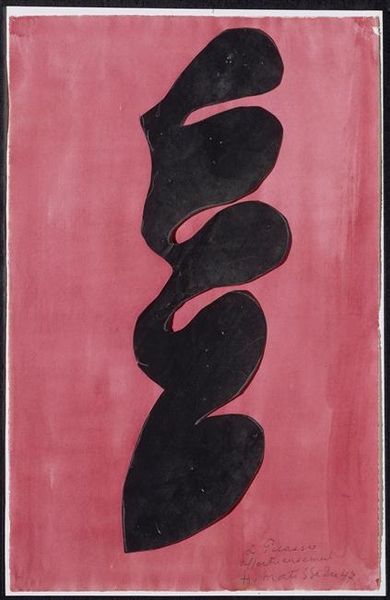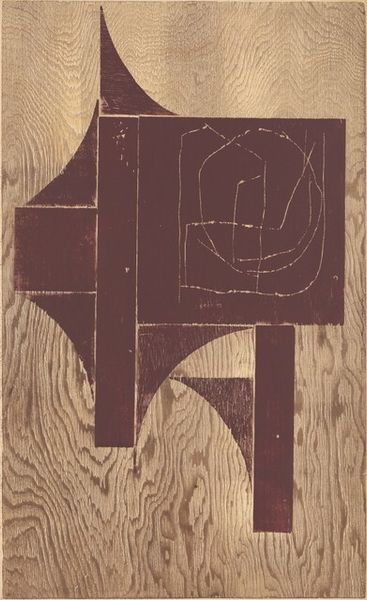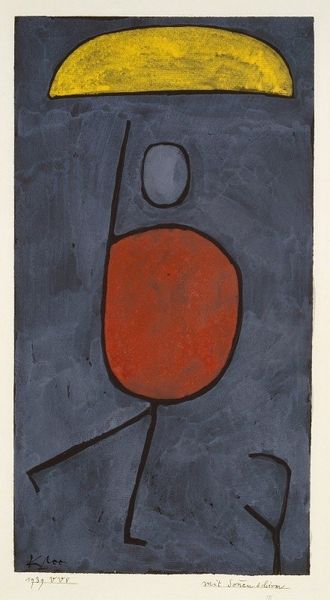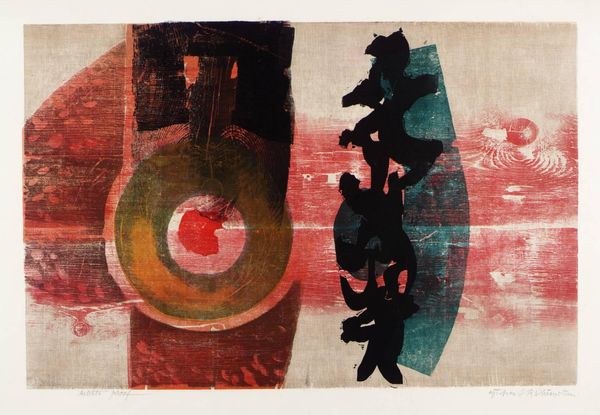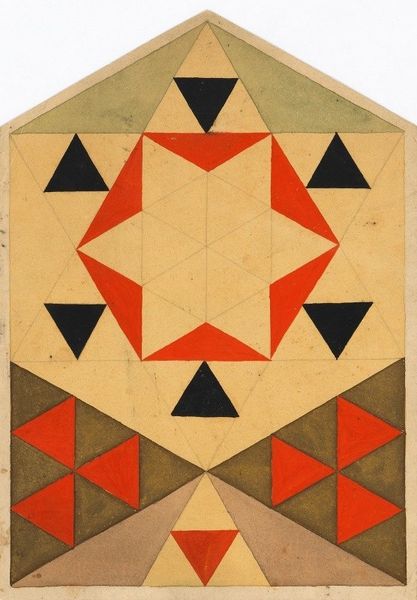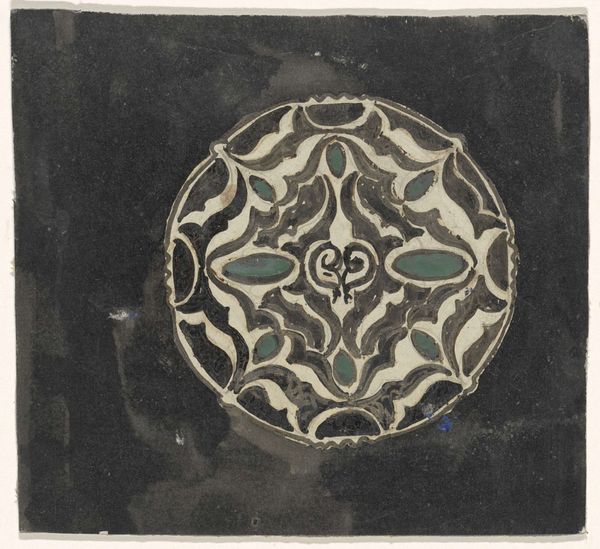
drawing, acrylic-paint
#
pop art-esque
#
drawing
#
pottery
#
pop art
#
colour-field-painting
#
acrylic-paint
#
form
#
geometric
#
abstraction
#
pop-art
Dimensions: sheet: 94.93 × 62.71 cm (37 3/8 × 24 11/16 in.)
Copyright: National Gallery of Art: CC0 1.0
Editor: Okay, so we’re looking at “Bipolarity” by Ming Wang, created in 1970 using drawing and acrylic paint. I’m struck by its almost…retro-futuristic feel? And the way the solid shapes play against the emptiness of that dark center. What do you make of it? Curator: Retro-futuristic, I love that! It's like something out of "The Jetsons" designed by Rothko! I’m fascinated by the title, "Bipolarity." The contrasting shapes, the top a void and the bottom a radiating light, the tension of hard edges with organic forms...makes me think of internal states. Does the painting convey opposing emotions? Editor: Definitely! I was also thinking about the colors – the bright red against that somber gray-blue background. They really pop, almost violently. Do you think that reflects the artist's intention? Curator: Intention… that’s a big word. But perhaps it's less about intention and more about intuition. Wang is capturing the raw energy, the highs and lows, you know? It’s interesting how those rounded rectangles almost feel like cells dividing. Or maybe it's Wang looking inward, showing the constant flux, the push and pull we all experience. Editor: Cells dividing... that's a cool reading. So, the title isn't just a label, but a key to understanding the visual language? Curator: Precisely! And you see how it’s not neatly symmetrical? That adds another layer. It is that imbalance which truly ignites it, I think. We learn more from turbulence, after all. What remains with you? Editor: The tension. Definitely the push-pull you described. It makes me want to revisit other abstract works with new eyes. Curator: Exactly, my friend. Art is the perfect starting point for reflection. Now go and enjoy that newfound appreciation.
Comments
No comments
Be the first to comment and join the conversation on the ultimate creative platform.
